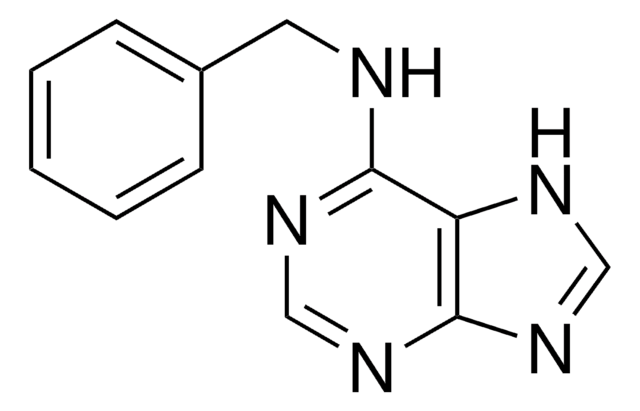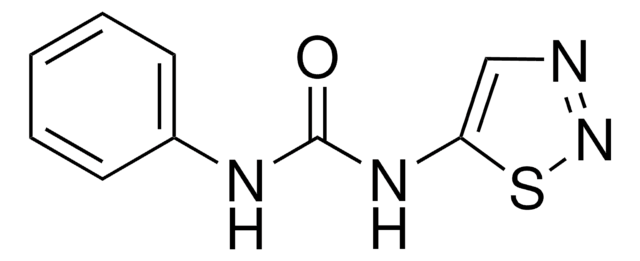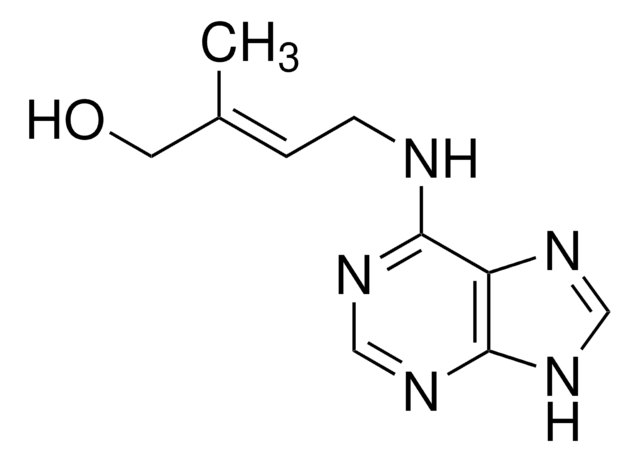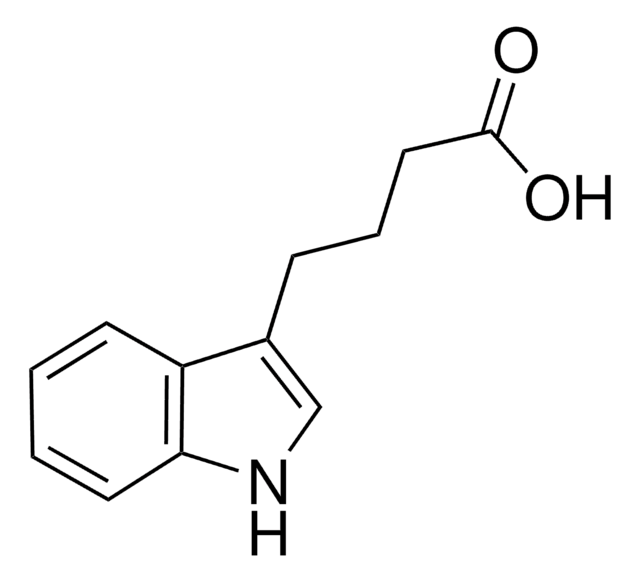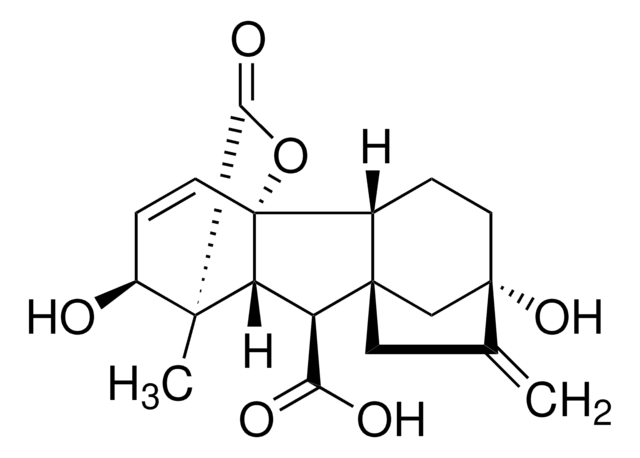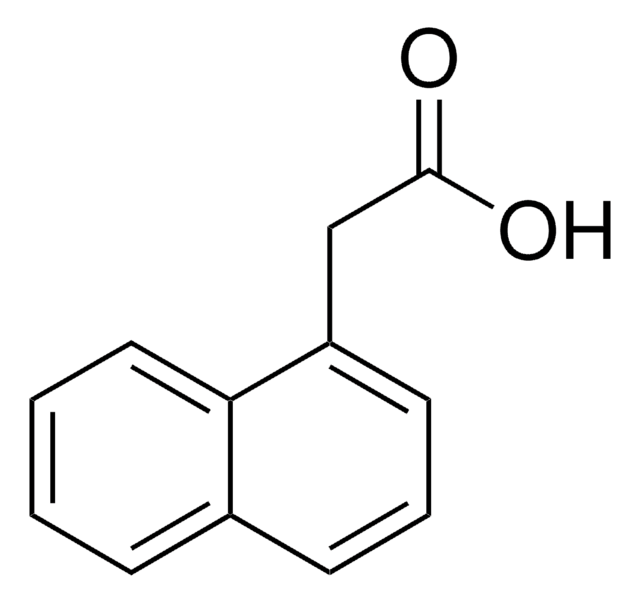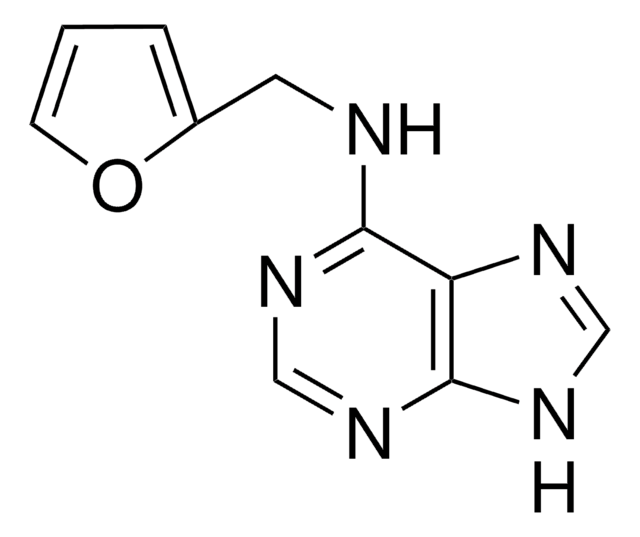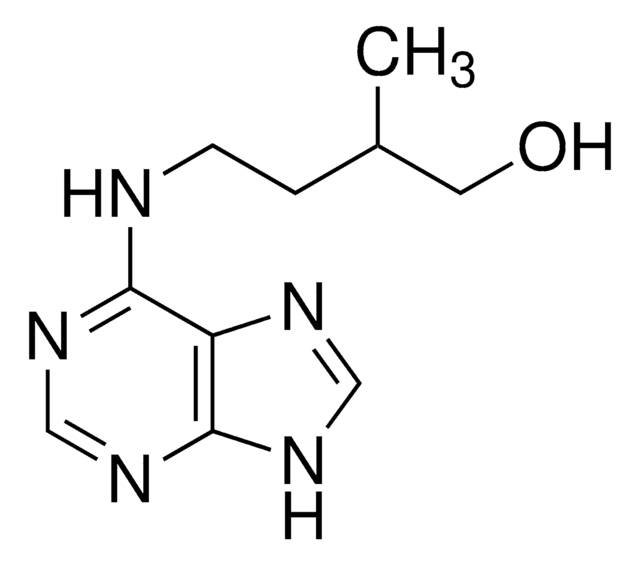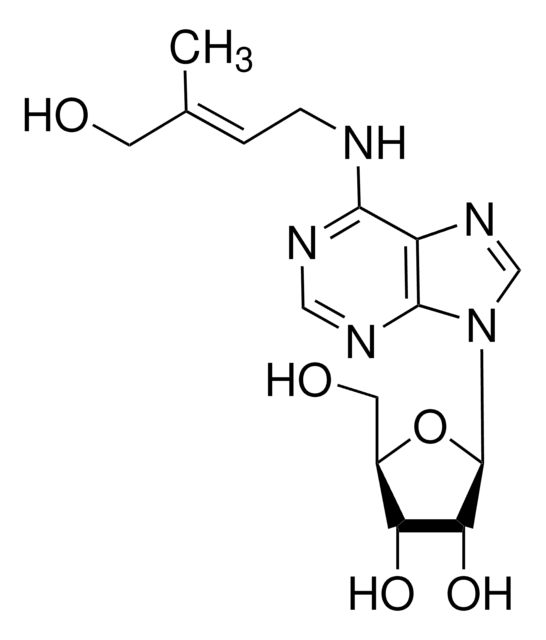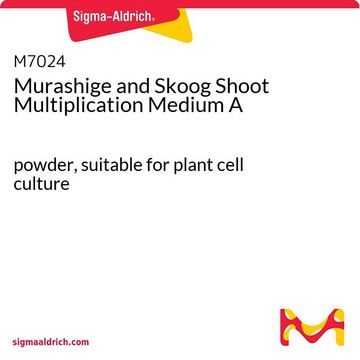D5912
6-(γ,γ-Dimethylallylamino)purine
suitable for plant cell culture, BioReagent, ≥90%
Synonym(s):
N6 dimethylallyladenine, 2iP, N6-(2-Isopentenyl)adenine
Sign Into View Organizational & Contract Pricing
All Photos(1)
About This Item
Empirical Formula (Hill Notation):
C10H13N5
CAS Number:
Molecular Weight:
203.24
MDL number:
UNSPSC Code:
10171502
PubChem Substance ID:
NACRES:
NA.72
Recommended Products
product line
BioReagent
Quality Level
Assay
≥90%
form
powder
technique(s)
cell culture | plant: suitable
application(s)
agriculture
storage temp.
−20°C
SMILES string
C\C(C)=C\CNc1ncnc2[nH]cnc12
InChI
1S/C10H13N5/c1-7(2)3-4-11-9-8-10(13-5-12-8)15-6-14-9/h3,5-6H,4H2,1-2H3,(H2,11,12,13,14,15)
InChI key
HYVABZIGRDEKCD-UHFFFAOYSA-N
Looking for similar products? Visit Product Comparison Guide
Application
6-(γ,γ-Dimethylallylamino)purine: has been used as a standard in ultra-high performance liquid chromatography to compare the chromatogram of transgenic and wild type (WT) crude hormone extracts to quantify cytokinin levels, may be used as a component of the Murashige and Skoog (MS) medium for callus culture and in vitro shoot induction, may be used as a supplement in MS medium to make simplified shoot induction medium (SIM) to treat explants for shoot induction
Biochem/physiol Actions
6-(γ,γ-Dimethylallylamino)purine (2iP) is a bacteria-derived riboside cytokinin used to grow plant tissues such as tobacco and soybean callus. 2iP is a precursor of the cytokinin Zeatin. 2iP can also be used in Schenk and Hildebrandt medium to support in vitro propagation of micro shoot cultures from shoot tips of Genista plants.
Storage Class Code
11 - Combustible Solids
WGK
WGK 3
Flash Point(F)
Not applicable
Flash Point(C)
Not applicable
Personal Protective Equipment
dust mask type N95 (US), Eyeshields, Gloves
Choose from one of the most recent versions:
Already Own This Product?
Find documentation for the products that you have recently purchased in the Document Library.
Customers Also Viewed
Wenzislava Ckurshumova et al.
The New phytologist, 204(3), 556-566 (2014-10-03)
In vitro regeneration of complete organisms from diverse cell types is a spectacular property of plant cells. Despite the great importance of plant regeneration for plant breeding and biotechnology, its molecular basis is still largely unclear and many important crop
G A Miura et al.
Plant physiology, 44(3), 372-376 (1969-03-01)
A 6-(gamma,gamma-dimethylallylamino) purine-like compound was found in the culture medium of Rhizopogon roseolus, which had been shown earlier to synthesize zeatin. The role of 6-(gamma,gamma-dimethylallylamino) purine as a precursor of zeatin was studied. Rhizopogon was furnished with 6-(gamma,gamma-dimethylallylamino) purine-8-(14)C. Cochromatography
Maria Luczkiewicz et al.
Zeitschrift fur Naturforschung. C, Journal of biosciences, 60(7-8), 557-566 (2005-09-17)
A two-stage method for in vitro propagation of six Genista species from shoot tips was developed. Multiple microshoot cultures were obtained by growing the shoot tip explants on Schenk and Hildebrandt medium supplemented with 9.84 microM 6-(gamma,gamma-dimethylallylamino)-purine and 0.99 microM
E Strzelczyk et al.
Acta microbiologica Polonica, 34(2), 177-185 (1985-01-01)
Studies on the effect of post culture liquids of actinomycetes on cytokinin-like substances production by mycorrhizal fungi have revealed that actinomycete metabolites inhibited or stimulated the synthesis of these compounds. The results of chromatographic analyses suggest, that substances stimulating the
Chieh-Han Pu et al.
Journal of food and drug analysis, 26(2), 637-648 (2018-03-24)
A multiresidue analytical method was developed for grapes for the following 24 plant growth regulators: 1-naphthylacetamide, 2,3,5-triiodobenzoic acid, 2,4,5-T, 2-naphthoxyacetic acid, 3-indolylacetic acid, 4-(3-indolyl)-butyric acid, 4-chlorophenoxyacetic acid, 4-nitrophenol, 6-benzylaminopurine, N6-isopentenyladenine, butralin, chlormequat chloride, chlorphonim-Cl, cloprop, forchlorfenuron, gibberellic acid 3, gibberellic acid
Our team of scientists has experience in all areas of research including Life Science, Material Science, Chemical Synthesis, Chromatography, Analytical and many others.
Contact Technical Service
